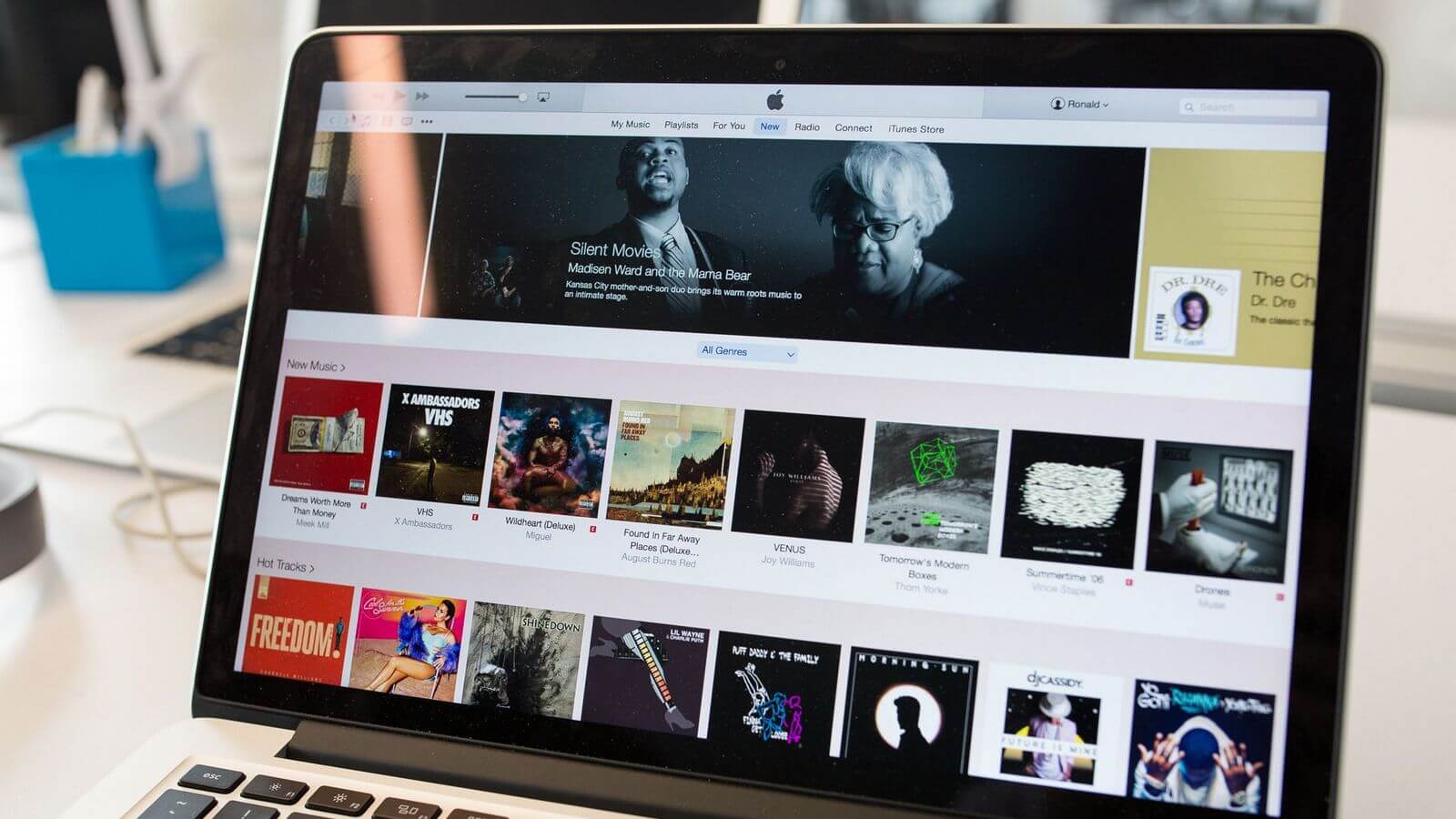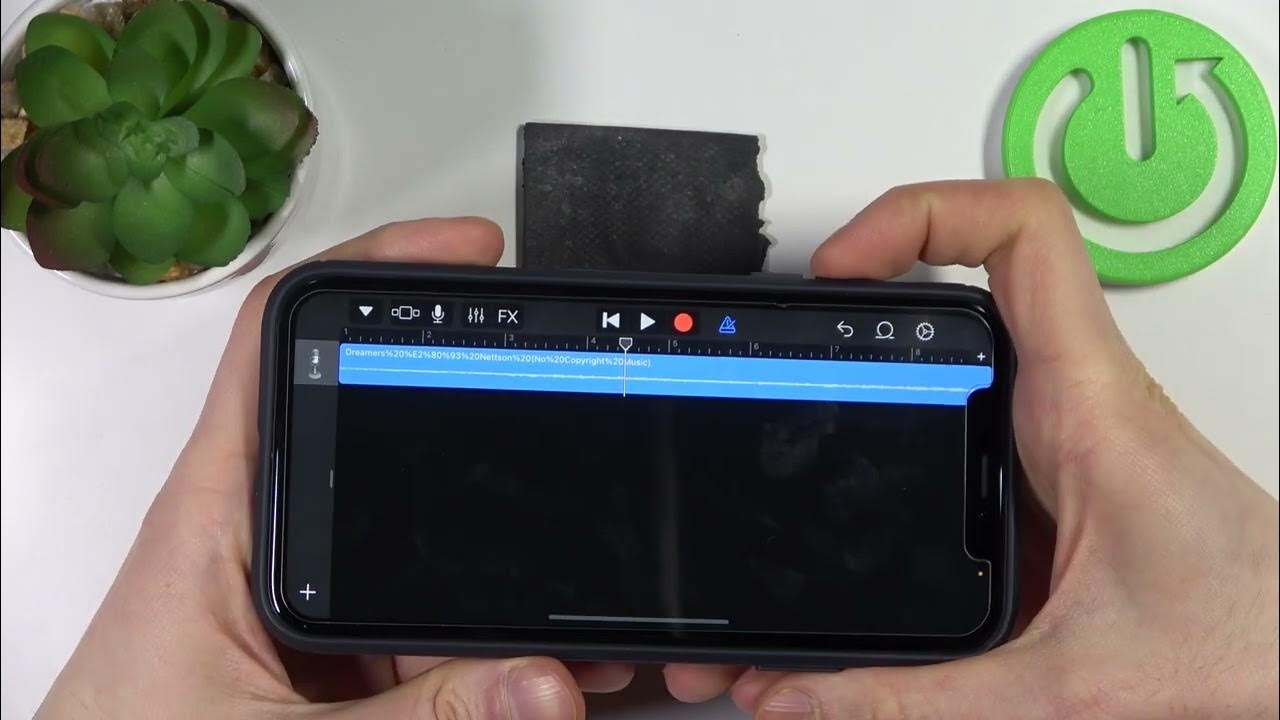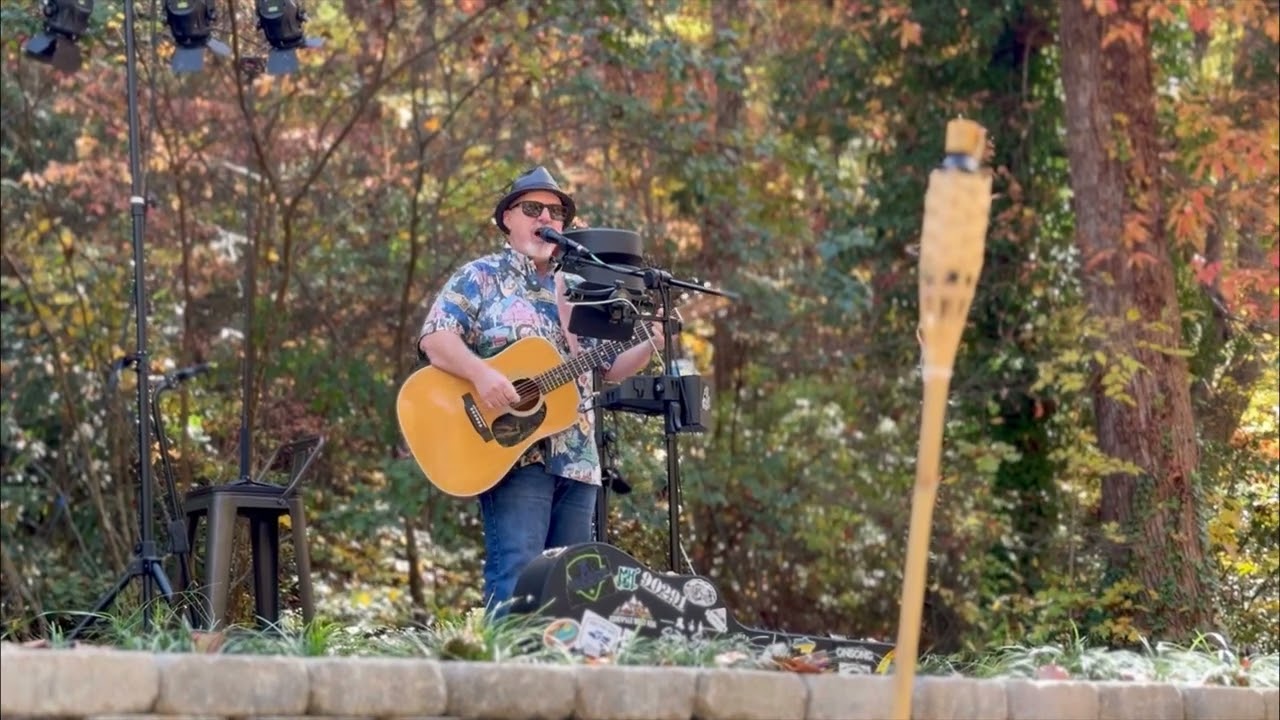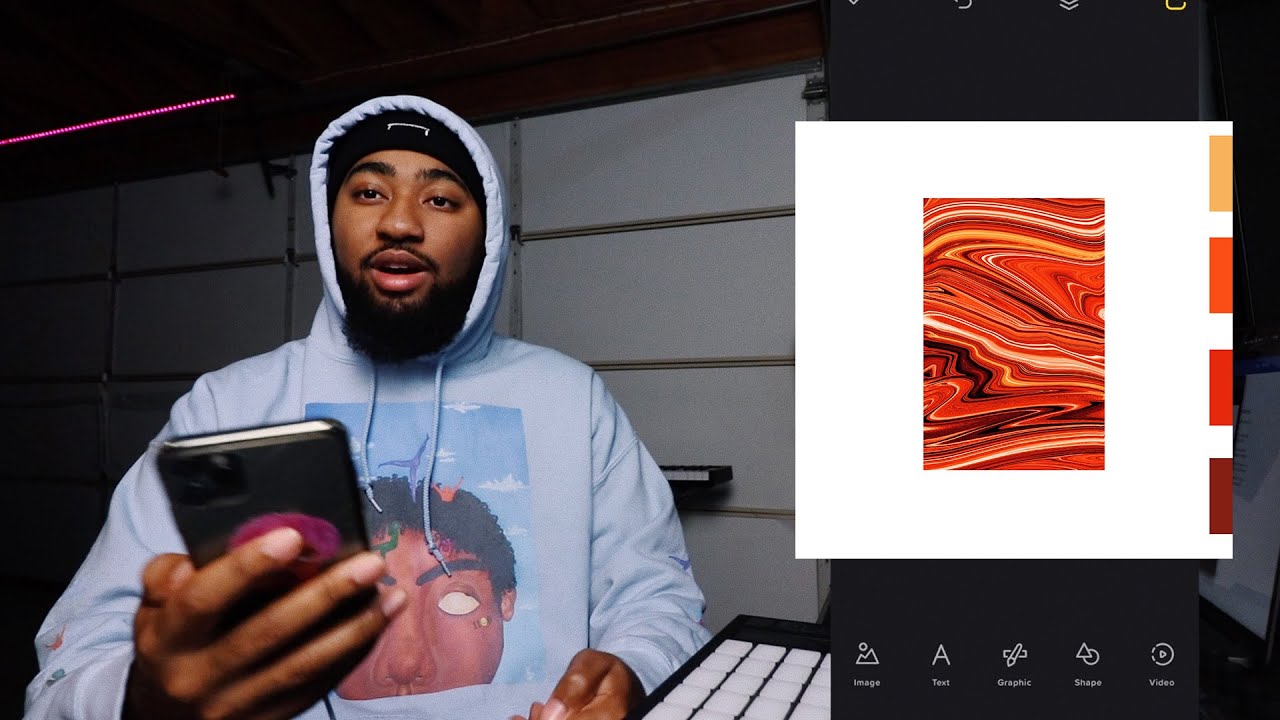Home>Production & Technology>Cover Song>How To Obtain Sync License For Cover Song


Cover Song
How To Obtain Sync License For Cover Song
Modified: January 22, 2024
Learn how to obtain a sync license for your cover song with our step-by-step guide. Ensure your cover gets the recognition it deserves while staying legally compliant.
(Many of the links in this article redirect to a specific reviewed product. Your purchase of these products through affiliate links helps to generate commission for AudioLover.com, at no extra cost. Learn more)
Table of Contents
- Introduction
- What is a sync license?
- Benefits of Obtaining a Sync License for a Cover Song
- Understanding the Legal Requirements
- Step-by-step Process of Obtaining a Sync License for a Cover Song
- Researching and Locating the Original Rights Holders
- Negotiating the Terms and Fees
- Submitting the Necessary Paperwork
- Potential Challenges and How to Overcome Them
- Conclusion
Introduction
Cover songs have been a popular way for artists to pay homage to their musical influences, put their unique spin on beloved classics, or breathe new life into forgotten gems. However, when it comes to releasing cover songs, there are legal obligations that must be met to ensure proper compensation for the original songwriters and publishers. One of these obligations is obtaining a sync license.
A sync license, short for synchronization license, is a legal agreement that grants permission to use a specific copyrighted composition in conjunction with visual media, such as film, television, advertisements, or video games. This license is crucial because it ensures that the original rights holders are compensated for the use of their work.
Obtaining a sync license for a cover song can be a complex and time-consuming process, but it is essential to protect the rights of both the original songwriters and the artists performing the cover. In this article, we will explore the benefits of obtaining a sync license for a cover song, the legal requirements to consider, and provide a step-by-step guide on how to navigate the process successfully.
Whether you are an independent artist looking to expand your reach through licensing opportunities or a filmmaker seeking the perfect soundtrack for your project, understanding the ins and outs of obtaining a sync license for a cover song is crucial. Let’s dive in and explore this fascinating aspect of the music industry in more detail.
What is a sync license?
A sync license, short for synchronization license, is a legal agreement that grants permission to use a specific copyrighted composition in conjunction with visual media. This can include films, television shows, commercials, video games, online videos, and more. The purpose of a sync license is to allow the copyrighted music to be synchronized or “synced” with the visuals of the media to create a cohesive and impactful experience for the audience.
When a cover song is used in visual media, whether it’s a live performance or a recorded version, a sync license is required to ensure that the appropriate rights holders are compensated for the use of their copyrighted work. This includes the original songwriters, composers, and publishers of the song.
It’s important to note that a sync license for a cover song is different from a mechanical license. A mechanical license grants permission to create and distribute a recording of a copyrighted composition. However, a sync license specifically covers the synchronization of the song with visual media, creating an additional layer of copyright protection.
The process of obtaining a sync license involves negotiating terms and fees with the rights holders. This can include discussing the duration of the usage, the territories in which the visual media will be released, and any additional specific requirements or requests outlined by the rights holders.
Overall, a sync license is a crucial component in utilizing cover songs in visual media projects. It ensures that the original rights holders are properly compensated for the use of their work and protects both the artists performing the cover song and the creators of the media in which it is used. Understanding the importance and intricacies of obtaining a sync license is essential for anyone involved in the world of music licensing and visual media production.
Benefits of Obtaining a Sync License for a Cover Song
Obtaining a sync license for a cover song offers a range of benefits for both the artist performing the cover and the creators of the visual media. Let’s explore some of these benefits:
- Legal Compliance: One of the primary benefits of obtaining a sync license is ensuring legal compliance. Using copyrighted music without permission can result in copyright infringement claims and legal consequences. By obtaining a sync license, you are providing evidence that you have the necessary rights to use the cover song in your visual media project.
- Credibility and Professionalism: When you obtain a sync license, it demonstrates professionalism and respect for the original rights holders. This can enhance your reputation as an artist or a filmmaker and establish a positive relationship with the music industry.
- Expanded Creative Opportunities: A sync license opens up a world of creative possibilities. It allows you to incorporate well-known or beloved songs into your visual media, creating a deeper emotional connection with your audience. Cover songs can evoke nostalgia or add a fresh twist to the visuals, enhancing the overall impact of your project.
- Increased Exposure: Utilizing a popular cover song in your visual media can attract a wider audience. Familiar tunes have the power to captivate viewers and create a memorable experience. This increased exposure can lead to more visibility for your project and potential opportunities for collaboration or further creative endeavors.
- Potential Revenue Streams: Obtaining a sync license allows you to explore potential revenue streams. Depending on the negotiated terms, you may be eligible to receive royalties or licensing fees from the usage of the cover song in your visual media project. This can provide a valuable source of income for both the artist and the original rights holders.
- Supporting the Original Songwriters: By obtaining a sync license, you are ensuring that the original songwriters and rights holders receive proper compensation for their creative work. This supports the music industry ecosystem and encourages the continued creation and production of exceptional music.
Overall, obtaining a sync license for a cover song brings numerous benefits, including legal compliance, expanded creative opportunities, increased exposure, and the potential for additional revenue. It allows you to showcase your creativity while respecting the rights of the original songwriters. So, whether you’re a musician, filmmaker, or content creator, obtaining a sync license is a valuable investment that can take your project to the next level.
Understanding the Legal Requirements
When it comes to obtaining a sync license for a cover song, it is important to have a clear understanding of the legal requirements involved. This ensures that you comply with copyright laws and protect the rights of the original songwriters and rights holders. Here are key legal requirements to consider:
- Permission from the Original Songwriters: To use a cover song in visual media, you need to obtain permission from the original songwriters or their authorized representatives. This involves locating and contacting the appropriate rights holders, which can include the songwriter, composer, and publishers.
- Clearance from Music Publishers: Music publishers play a critical role in granting sync licenses for cover songs. They are responsible for safeguarding the rights of the songwriters and negotiating licensing agreements. It is essential to contact the music publishers associated with the cover song to secure the necessary permissions and licenses.
- Researching Copyright Ownership: Before seeking a sync license, it is crucial to research and determine the copyright ownership of the cover song. This involves identifying the names of the songwriters, composers, and publishers who hold the rights to the song. This information can typically be found through royalty collection organizations, music publishing databases, or by directly contacting the original rights holders.
- Understanding Copyright Duration: Copyright protection varies from country to country, and it’s crucial to understand the duration of copyright for the cover song in question. Some countries have different copyright terms based on when a song was created or released. Familiarize yourself with the specific copyright laws in the relevant territories to ensure compliance.
- Obtaining Proper Licensing Agreements: Once you have identified the relevant rights holders, you will need to negotiate and obtain proper licensing agreements. This includes discussing terms, such as the duration of the usage, the territories in which the visual media will be released, and any specific requirements or requests outlined by the rights holders.
- Clearance for Ancillary Rights: In addition to the sync license, there may be ancillary rights that need clearance, such as master recording rights or performance rights. These additional rights depend on specific circumstances, such as using a pre-existing cover version or recording a new cover version. It is important to understand and obtain the necessary clearances for these ancillary rights.
It is essential to consult with legal professionals or music licensing experts who specialize in sync licensing to ensure that you fulfill all the legal requirements. They can provide guidance, assist in negotiations, and ensure that the necessary paperwork is completed correctly.
By understanding and complying with the legal requirements, you can navigate the sync licensing process successfully, protect the rights of the original songwriters, and avoid any legal issues that may arise.
Step-by-step Process of Obtaining a Sync License for a Cover Song
The process of obtaining a sync license for a cover song can be intricate and involves several steps. Here is a step-by-step guide to help you navigate the process successfully:
- Step 1: Identify the Rights Holders: Firstly, research and identify the rights holders of the cover song. This includes the original songwriters, composers, and music publishers associated with the song. Use resources such as royalty collection organizations, music publishing databases, or contact the appropriate copyright holders directly.
- Step 2: Contact the Music Publishers: Reach out to the music publishers associated with the cover song. This can often be done through their websites or by contacting them directly via email or phone. Inquire about the necessary permissions and licenses required to sync the cover song with your visual media project. Provide details about the intended usage, duration, territories, and any other relevant information.
- Step 3: Negotiate the Terms: Once you have established contact with the music publishers, negotiate the terms of the sync license. This includes discussing the fees, duration of usage, territories covered, and any specific conditions or requirements outlined by the rights holders.
- Step 4: Obtain a Written Agreement: It is crucial to ensure that all agreements are documented in writing. This includes the terms and conditions, the agreed-upon fees, and any other relevant details. A written agreement protects both parties involved and provides clarity in case of any disputes that may arise in the future.
- Step 5: Complete the Necessary Paperwork: Fill out the required paperwork and documentation provided by the music publishers. This may include license application forms, cue sheets, or any other specific legal documentation. Ensure that all information provided is accurate and complete to expedite the licensing process.
- Step 6: Make the Required Payments: Once the sync license is approved, make the necessary payments as agreed upon. This may include upfront fees, ongoing royalties, or a combination of both. Ensure that you comply with the payment terms and schedule outlined in the agreement.
- Step 7: Properly Credit the Original Songwriters: When using the cover song in your visual media project, ensure that the original songwriters and composers are properly credited. This includes listing their names in the credits or any accompanying promotional material as per the agreement.
It is important to note that the specific steps and requirements may vary depending on the song, the rights holders involved, and the jurisdiction you are operating in. Consulting with legal professionals or music licensing experts who specialize in sync licensing can provide valuable guidance throughout the process and ensure that you navigate it successfully.
By following these steps and obtaining the necessary sync license for your cover song, you can rest assured knowing that you have fulfilled your legal obligations and are ready to integrate the cover song seamlessly into your visual media project.
Researching and Locating the Original Rights Holders
Researching and locating the original rights holders of a cover song is a crucial step in obtaining a sync license. Here are some steps to help you in this process:
- Use Royalty Collection Organizations: Utilize royalty collection organizations such as ASCAP, BMI, or SESAC to gather information about the original songwriters and publishers. These organizations maintain comprehensive databases of music copyrights and associated rights holders.
- Explore Music Publishing Databases: Online music publishing databases, such as MusicMatch or Songfile, can be valuable resources in finding information about songwriters, composers, and publishers. These databases usually have search functions that allow you to locate specific songs and their associated copyright owners.
- Contact Performing Rights Organizations (PROs): PROs, such as ASCAP, BMI, or PRS, represent songwriters and publishers and can provide information about their members and contacts. Reach out to the appropriate PRO and inquire about the rights holders of the cover song.
- Utilize Digital Distribution Platforms: Digital distribution platforms like DistroKid or TuneCore often require information about the original rights holders during the song uploading process. They can provide you with contact information or insights into the required permissions for cover songs.
- Search Official Music Credits: Research official music credits in album booklets, liner notes, or digital platforms like AllMusic. These credits typically include information about songwriters, composers, and publishers.
- Reach Out to Fellow Musicians: Networking within the music community can be beneficial in locating the rights holders of a cover song. Artists who have previously covered the same song or musicians who have experience with the sync licensing process might be able to provide useful insights or leads.
- Directly Contact Rights Holders: If you are unable to locate the original rights holders through the steps above, consider reaching out to the record label or publisher associated with the cover song. They can provide valuable information or direct you to the appropriate contacts.
Remember to document all steps taken to locate the rights holders, including the dates, methods used, and any responses received. This information will be useful throughout the sync licensing process.
It is important to understand that the process of researching and locating original rights holders can sometimes be challenging, especially for older or less well-known songs. However, persistence and thoroughness can increase your chances of finding the necessary information and proceed with obtaining the sync license for your cover song.
Consulting with legal professionals or music licensing experts can also provide valuable guidance and support in navigating this research process and ensuring that you contact the correct rights holders.
Negotiating the Terms and Fees
Once you have identified the original rights holders and established contact with the music publishers, the next step in obtaining a sync license for a cover song is negotiating the terms and fees. This stage is crucial in reaching an agreement that satisfies both parties involved. Here are key considerations for this negotiation process:
- Duration of Usage: Determine the timeframe for which you intend to use the cover song in your visual media project. Negotiate the duration of the license, whether it’s for a specific period or for the lifetime of the project.
- Territories: Specify the territories in which you plan to distribute or publicly display your visual media project. Depending on the reach of your project, you may need to negotiate global rights or rights limited to specific regions.
- Fees and Royalties: Discuss the financial aspect of the sync license. Negotiate the fees that will be paid upfront for the usage of the cover song, as well as any ongoing royalties or revenue sharing arrangements, if applicable. It is common for sync licenses to involve a combination of upfront fees and ongoing royalty payments based on the usage and success of the visual media project.
- Exclusive or Non-Exclusive: Determine whether the sync license will be exclusive or non-exclusive. An exclusive license means that no other party can use the cover song in the same or similar visual media during the specified period. A non-exclusive license allows multiple parties to use the same cover song in different visual media projects.
- Additional Requirements: Discuss any specific requirements or conditions outlined by the rights holders. This may include requests for certain creative treatments, on-screen credits, promotional considerations, or sample approvals. Ensure that you understand and agree to these additional terms before finalizing the sync license.
- Legal Language and Contract: Work with legal professionals or music licensing experts to draft or review the sync license agreement. Ensure that all negotiated terms and conditions, including the agreed-upon fees and requirements, are documented accurately and legally. This will protect both parties and provide a clear understanding of expectations.
Throughout the negotiation process, maintain open and transparent communication with the music publishers and rights holders. Be prepared for possible counteroffers, and be willing to find a mutually beneficial agreement. Remember, negotiation is a collaborative effort to ensure the rights of all parties involved are respected and compensated fairly.
Once an agreement is reached, ensure that you comply with the terms outlined in the sync license, including the payment of fees and royalties. Properly credit the original songwriters and composers as per the agreement.
By navigating the negotiation process with professionalism and respect, you can secure a sync license for your cover song that aligns with your project’s needs and respects the rights of the original rights holders.
Submitting the Necessary Paperwork
Once the terms and fees for the sync license of your cover song have been negotiated and agreed upon, the next step is to submit the necessary paperwork to finalize the licensing process. Properly completing and submitting the required documentation is crucial to ensure legal compliance and protect the rights of all parties involved. Here’s what you need to do:
- Obtain the Required Forms: Contact the music publishers or rights holders to obtain the specific forms or paperwork necessary for the sync license. They will provide you with the appropriate documentation or direct you to the relevant online portals where you can access the necessary paperwork.
- Fill Out the Forms: Carefully complete all the required forms, ensuring that the information provided is accurate and up to date. Provide details such as the project title, description, duration of usage, territories, and any specific requirements or requests as agreed upon during the negotiation stage.
- Include Supporting Documents: Depending on the requirements, you may need to include supporting documents along with your forms. This can include cue sheets, which list the usage and timing of the cover song in your visual media project, as well as any other relevant documentation requested by the rights holders.
- Review and Double-Check: Before submitting the paperwork, thoroughly review all the information provided. Double-check for any errors or omissions and ensure that the forms are completed in their entirety. This will minimize the chances of delays or complications during the licensing process.
- Submit as Directed: Follow the instructions provided by the music publishers or rights holders regarding the submission process. This may involve submitting the paperwork online through a designated portal, sending physical copies by mail, or emailing the forms and supporting documents to a specified contact person.
- Keep Copies for Records: Make copies of all the paperwork and supporting documents you submit for your own records. This will serve as proof of your compliance with the licensing requirements and ensure that you have documentation in case of any future disputes or inquiries.
- Track the Progress: Keep track of the status of your submission. If possible, follow up with the music publishers or rights holders to confirm receipt of your paperwork and inquire about the estimated processing time. This will help you stay informed and address any potential issues promptly.
It is essential to complete and submit the necessary paperwork in a timely manner to avoid any delays in obtaining the sync license. If you have any questions or uncertainties about the required paperwork, it is prudent to seek guidance from legal professionals or music licensing experts who can provide relevant advice and ensure that you fulfill all the necessary requirements.
By properly submitting the required paperwork, you will demonstrate your commitment to legal compliance and pave the way for a smooth and successful licensing process for your cover song.
Potential Challenges and How to Overcome Them
While obtaining a sync license for a cover song can be a rewarding process, there are potential challenges that you may encounter along the way. By being aware of these challenges and taking proactive steps to overcome them, you can navigate the sync licensing process more effectively. Here are some common challenges and strategies to overcome them:
- Difficulty Locating Rights Holders: Locating the original rights holders of a cover song can sometimes be challenging, especially for older or less well-known songs. To overcome this, conduct thorough research using royalty collection organizations, music publishing databases, and reach out to performing rights organizations (PROs) for assistance. Networking with fellow musicians and seeking guidance from music licensing experts can also provide valuable leads.
- Complex Negotiations: Negotiating the terms and fees of a sync license can involve intricate discussions and varying expectations. To tackle this challenge, approach the process with a collaborative mindset, be open to compromise, and seek mutually beneficial agreements. Consulting with legal professionals or experienced music licensing experts can provide valuable guidance and help navigate the negotiation process successfully.
- Managing Costs: Obtaining a sync license for a cover song can involve upfront fees and ongoing royalties, which may present financial challenges. It’s crucial to plan and budget accordingly. Consider the scope and potential revenue of your visual media project and determine the feasibility of the licensing costs. If needed, explore alternative funding sources or seek financing options available in the music industry.
- Clearance for Ancillary Rights: In addition to the sync license, there may be ancillary rights that require clearance, such as master recording rights or performance rights. Ensure that you understand and obtain the necessary clearances for these ancillary rights, as they may add an extra layer of complexity to the licensing process. Consult with legal professionals or music licensing experts to navigate these requirements effectively.
- Unresponsive Rights Holders: It is possible that you may encounter rights holders who are unresponsive or difficult to reach. Persistence is key in these situations. Follow up with polite and professional reminders, try different communication channels, and explore alternative means of contact. If your efforts are consistently met with silence, consult with legal professionals to explore potential solutions and alternative approaches.
- Legal Compliance: Understanding and adhering to copyright laws and licensing requirements can be complex. To ensure legal compliance, seek guidance from legal professionals or music licensing experts who specialize in sync licensing. They can provide insights into the specific regulations and help you navigate the process while protecting your interests and respecting the rights of the original rights holders.
By recognizing and proactively addressing these potential challenges, you can overcome obstacles in the sync licensing process and increase the likelihood of obtaining a successful sync license for your cover song. Remember, patience, persistence, and seeking professional advice can greatly help in overcoming these challenges.
Conclusion
Obtaining a sync license for a cover song is an essential step in incorporating copyrighted music into visual media projects while respecting the rights of the original songwriters and publishers. Throughout this article, we have explored the importance of sync licensing, the benefits it provides, and the steps involved in the process.
By obtaining a sync license, you ensure legal compliance, establish credibility and professionalism, and open up numerous creative opportunities. Utilizing a popular cover song can attract a wider audience, increase exposure, and potentially create new revenue streams. It also supports the original songwriters, enabling them to continue creating exceptional music.
Understanding the legal requirements, researching and locating the original rights holders, negotiating the terms and fees, submitting the necessary paperwork, and overcoming potential challenges are all crucial aspects of obtaining a sync license for a cover song. By following these steps and seeking guidance from music licensing experts, you can navigate the process successfully.
Remember, the sync licensing process may present challenges, such as difficulties in locating rights holders, complex negotiations, and managing costs. However, with perseverance, collaboration, and a commitment to legal compliance, these challenges can be overcome.
As you embark on your journey to obtain a sync license for a cover song, prioritize communication, respect, and professionalism in your interactions with the original rights holders. By doing so, you can establish positive relationships, protect the rights of all parties involved, and create memorable visual media projects that resonate with audiences.
Obtaining a sync license for a cover song is a rewarding experience that allows you to showcase your creativity while respecting the rights of the original songwriters. So, take the necessary steps, consult with experts when needed, and enjoy the process of integrating cover songs into your visual media projects with the proper legal permissions in place.











